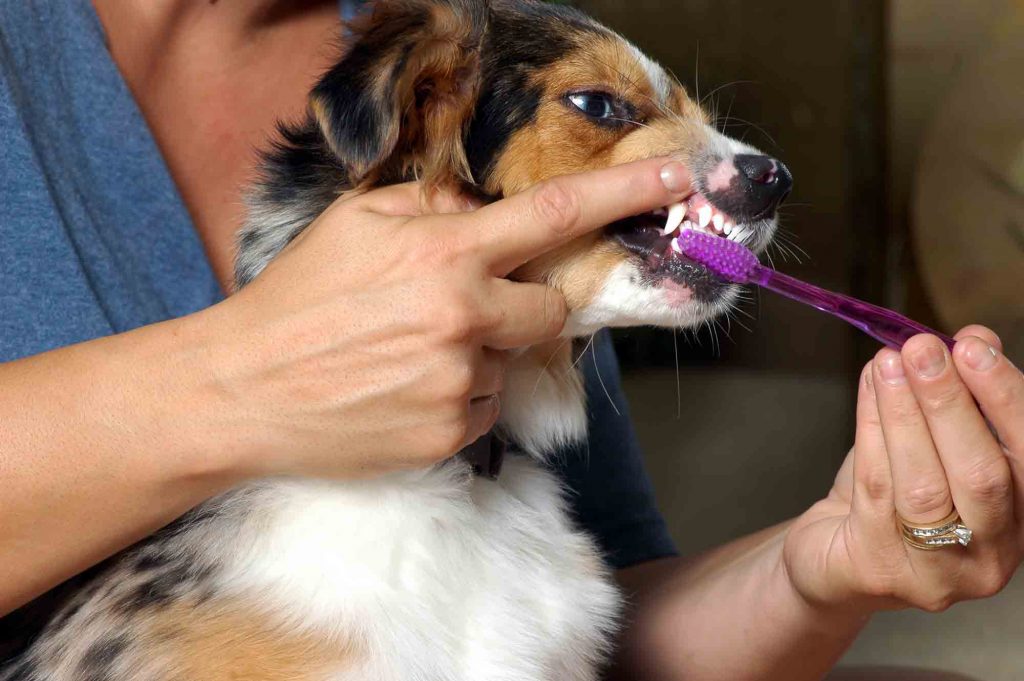Anesthesia-Free Pet Dental Cleanings
 We are frequently asked about anesthesia-free pet dental cleanings. It involves performing a dental cleaning on a pet by scaling (cleaning and scraping) the pet’s teeth to the gumline without using general anesthesia.
We are frequently asked about anesthesia-free pet dental cleanings. It involves performing a dental cleaning on a pet by scaling (cleaning and scraping) the pet’s teeth to the gumline without using general anesthesia.
The Marketing of Anesthesia-Free Pet Dental Cleanings
Marketing campaigns have primarily driven the popularity of anesthesia-free dentals. They promote this method as a less expensive alternative to dental cleanings performed under general anesthesia. Unfortunately, this popularity stems from misinformation about what proper dental cleaning entails. Marketers for anesthesia-free dental cleanings often fail to disclose what happens. In some cases, worsen a pet’s oral health. And in extreme cases, involve abuse and cruelty.
Pet owners looking to reduce the need for their pet to undergo general anesthesia might find the idea of anesthesia-free dental cleanings appealing. However, this procedure comes with numerous risks and issues. In our opinion, the risks outweigh any perceived benefits.
Problems Start Below the Gumline
More than 60% of oral issues in pets occur below the gumline. These conditions are not only painful but, if left untreated, can spread bacteria to the heart, lungs, and kidneys:
- Bacterial buildup
- Gum inflammation
- Bone & gum tissue loss
- Weakened root sockets
- Cavities
- Tooth loss
To accurately assess the health of a pet’s mouth, veterinarians must take oral X-rays, which can only be performed effectively while the pet is under general anesthesia.
The Importance Of Pet Dental Care
By the age of 3, most dogs and cats exhibit signs of dental disease. If left untreated, dental disease can cause systemic health issues, along with significant pain, difficulty eating, infections, and tooth loss.
Proper, professional dental examinations and cleanings under anesthesia are essential in order to provide a pet with a complete and thorough treatment — a 12-step process that includes:
- Professional dental scaling of each tooth to remove tartar both above and below the gum line
- Polishing of tooth surfaces to minimize new tartar buildup
- Complete oral examination, including, looking for inflammation, sores or lumps
- Dental X-rays that provide a clear view of the health of gums, roots and jaw bone
Anesthesia-Free Pet Dental Cleanings Don’t Deliver
A professional veterinary dental cleaning aims to fully remove tartar and plaque from both above and below the gum line while addressing all aspects of a pet’s oral health. Achieving these goals without anesthesia is impossible for the following reasons:
- Most people who offer anesthesia-free pet dental services are not trained, licensed professionals. In the worst cases, these procedures are done by amateurs in the back room of a retail outlet.
- A dental examination and cleaning is a highly stressful event for a pet. Most are not able, nor willing, to keep their mouths open for any dental treatment without having to be forcefully (often cruelly) restrained. Imagine yourself in this situation.
- Sharp instruments are a necessary part of a dental cleaning, and pets that aren’t under general anesthesia are likely to be injured during the process.
- Only plaque and tartar that is visible above the surface of the gums can be addressed during an anesthesia-free cleaning. Because most dental disease exists below the gum line, it will undoubtedly be missed and remain untreated.
- Dental X-rays cannot be properly or safely performed on a pet without the use of general anesthesia.
The Root Of The Matter
The American Veterinary Dental College (AVDC), American Veterinary Medical Association (AVMA) and American Animal Hospital Association (AAHA) have all issued official statements regarding the need for anesthesia in order to conduct complete and effective dental treatments on pets.
According to the AVDC, the advantages of pet dental scaling under anesthesia with intubation include:
- Elimination of fear, stress and anxiety in the pet
- Elimination of pain resulting from examination and treatment of affected dental tissues during the procedure
- Protection of the airway and lungs from accidental aspiration (breathing in debris from the cleaning process that can cause blockages/infection)
Final Thoughts
Our veterinarians and veterinary dental specialists have witnessed the long-term effects of relying solely on anesthesia-free dentals throughout a pet’s life. Teeth that may appear healthy during a visual inspection above the gum line are often found to be infected or decayed below the gum line when examined with dental X-rays, leading to the need for tooth extractions.
At Lone Tree Veterinary Medical Center, we couldn’t agree more that the use of anesthesia during pet dental procedures is absolutely essential. Please don’t hesitate to reach out to us with any questions you may have regarding your pet’s oral health.



